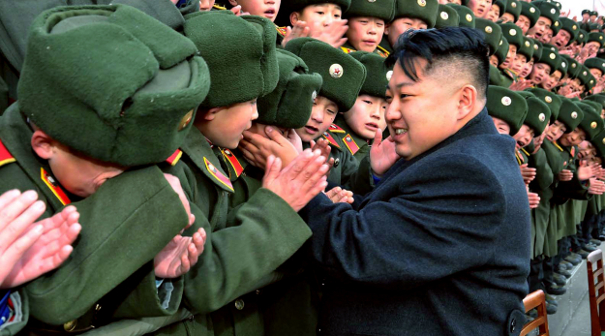On February 29, 2012, the United States and North Korea separately announced agreement to freeze the North’s nuclear activities and medium- and long-range missile tests, and to provide American nutritional assistance to vulnerable populations in the North. The agreement has been diagnosed in detail elsewhere. This discussion is about the forces that brought it about.
Think back to 2010. North Korea, anticipating a leadership succession at home and tough love from South Korea, sank a South Korean navy ship and fired deadly artillery at Southern civilians on Yeonpyeong Island. The United States responded with prominent naval and other exercises to send a message of resistance and solidarity to the North Koreans, as well as to Beijing. President Barack Obama communicated clearly to his Chinese counterpart that continued misbehavior by Pyongyang would lead to an even stronger “strategic” response, meaning most likely a greater U.S. role in the peninsula’s defense than China would prefer.
At the end of November 2010, China’s state councilor for foreign affairs, Dai Bingguo, an old North Korea hand, made an unprecedented parallel set of visits to Seoul and Pyongyang to seek to restore calm. Despite persistent vitriol, and even continuing military exercises since that unique trip, the calm has prevailed. China evidently agreed with American envoys who asserted that a good state visit to Washington by China’s President Hu Jintao in early 2011 would require meeting a number of preconditions, prominent among them Chinese restraint on North Korea’s bad behavior.Foreign sources close to Pyongyang revealed last week that the February 29 agreement was no surprise, in the sense that the North has been moving in a different direction for more than a year. They had detected as early as December 2010 that Pyongyang realized its use of force to extract concessions from Seoul had come to an end. China’s intervention, at American behest, had turned the tide.
Much of 2011 was consumed in protracted repositioning by the North to reverse its previous repudiation of the 1994 Agreed Framework with the United States, and the joint statement of Sept 17, 2005, in which the six parties convened by Beijing (China, Russia, South and North Korea, Japan, and the United States) had pledged denuclearization of the peninsula.
Contacts resumed in New York City between North Korean representatives and U.S. officials. The South Korean and North Korean nuclear negotiators met informally twice. The U.S. negotiating team, under newly appointed ambassador Glyn Davies, was in Beijing reaching agreement on returning North Korea to its previous pledges in mid-December when the North’s leader Kim Jung Il died suddenly, throwing the whole process into doubt.
With North Korea in mourning, there was no way to predict precisely how Pyongyang would proceed with the undertaking that was all but formally agreed the previous week in Beijing, most likely with the late leader’s blessing. The willingness of the young successor to resume fairly quickly publicized activities, in contrast with his father’s three years of mourning for his grandfather, may have been a hint that the return to talks on denuclearization remained on track.
But it was not until February 2012 that the United States learned through the New York channel that Pyongyang was ready to get back to business. There was a hint in the North’s official media of seeking higher food amounts and more fungible varieties than had been tentatively agreed in December, which might have complicated or even impeded agreement. But for the moment, Pyongyang had chosen the path of accommodation and reward, rather than renewed provocations.
The North Korean negotiating team that sits across from the U.S. team is highly experienced and knowledgeable. It has been party to new agreements and then their repudiation. Some observers have noted that their American counterparts are far less imbued in the minutiae of dealing with North Korea and may be at a disadvantage.
The Americans may have displayed skills in private sessions that transcend regional expertise, and helped to get to the outcome on February 29 and after. They will be tested in future stages of the talks. But they no doubt benefited from a policy set in 2010 to resist North Korean provocations with firmness and to offer diplomatic incentives to China for a more peaceful result. Firmness is likely to remain an important foundation for success going forward.
Analysts naturally are trying to assess whether the February 29 agreement means new leader Kim Jung Un has chosen a new economic and diplomatic path that might lead to reform and peaceful inter-Korean relations. By contrast, some speculate he is just marching along his father’s path until he consolidates his hold on power, therefore we cannot know what the future holds.
In the absence of clear indications of the direction he intends to take, firm resistance to provocations will be a steadying influence. By securing all the opportunistic doors he might choose to pass through, such as having Seoul return to an overly generous use of money, fertilizer, and food to buy temporary peace, the United States and other negotiators can welcome the North’s representatives with smiles and handshakes at the door to the bargaining room.
